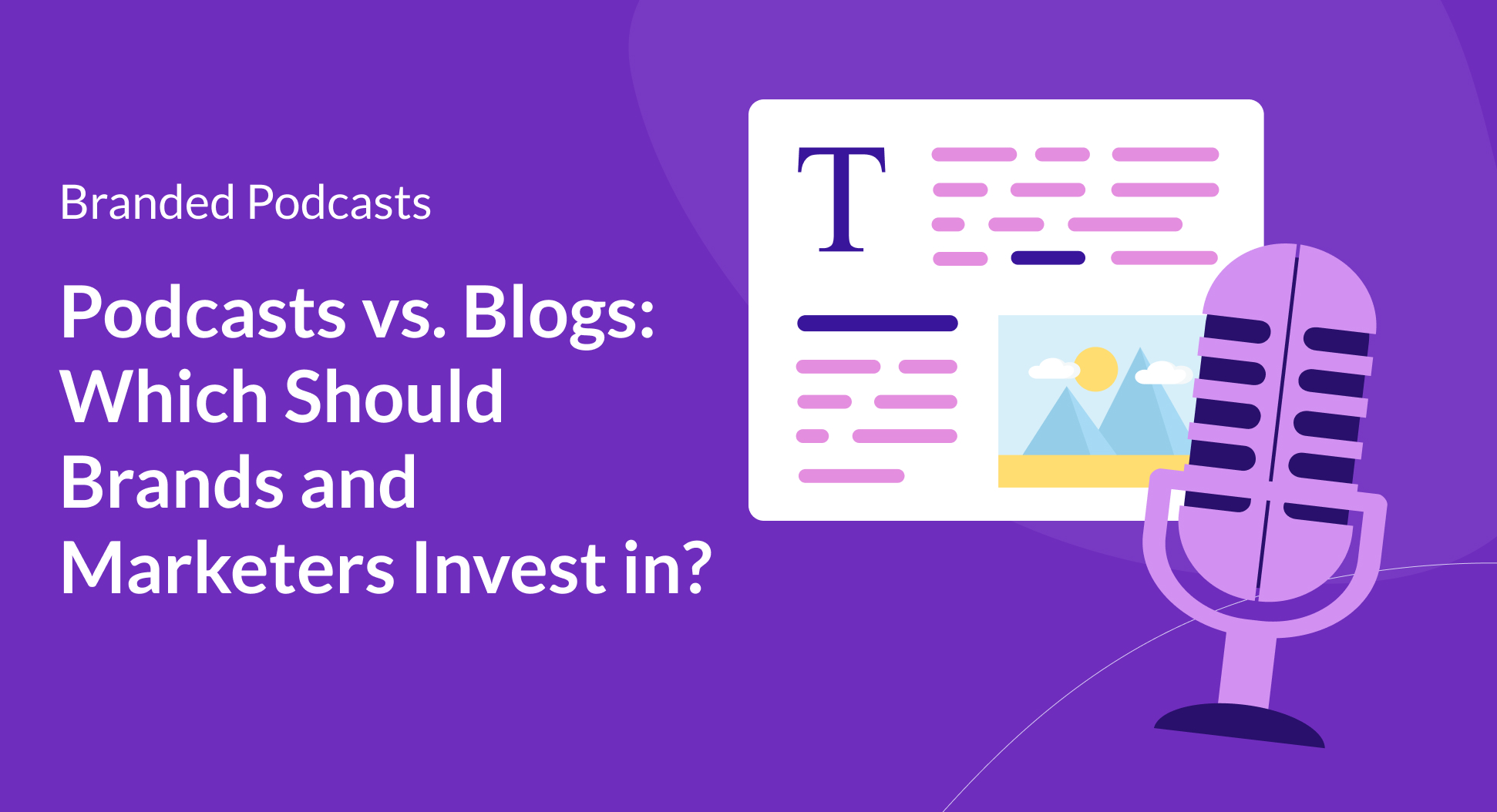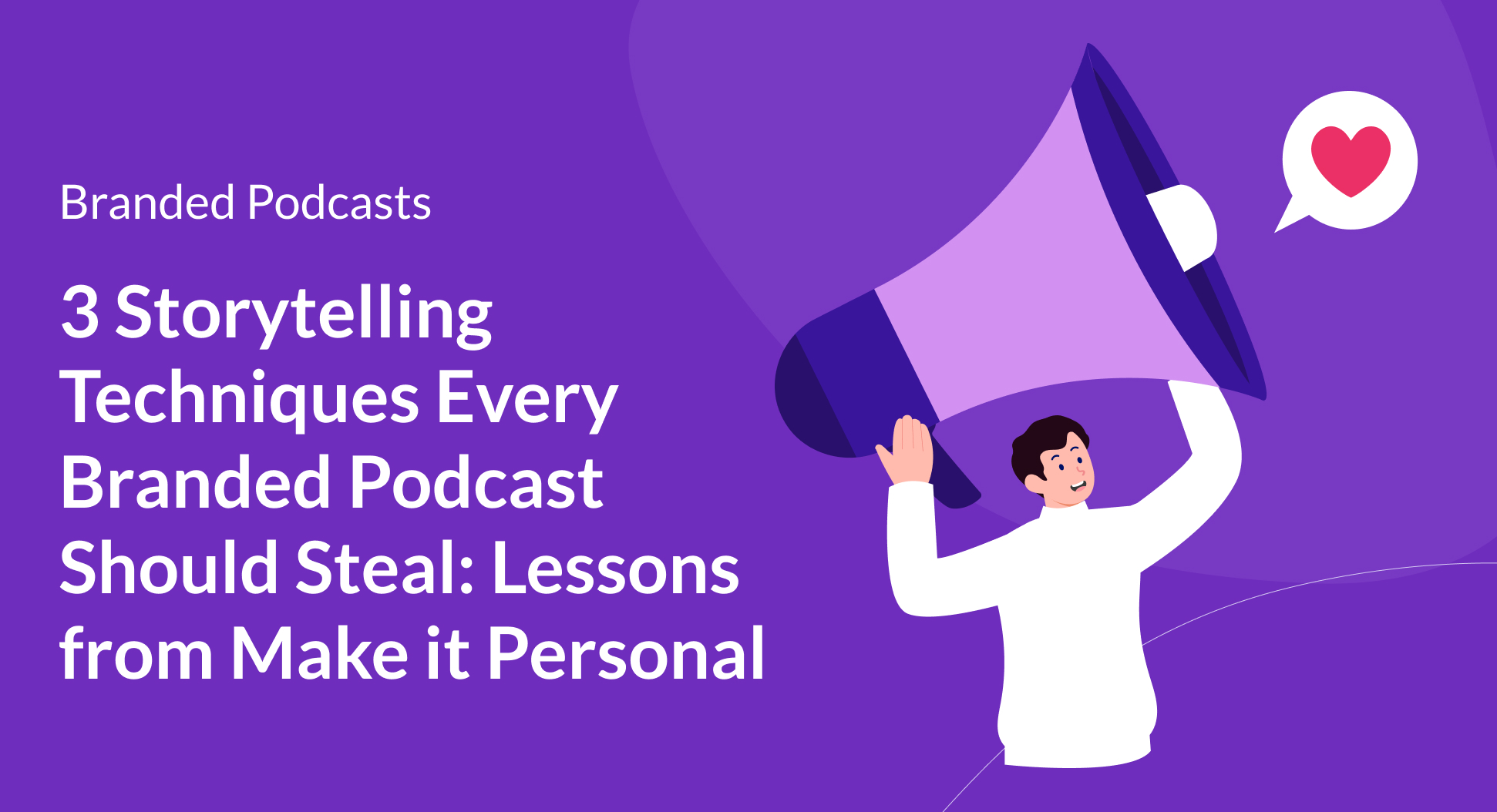Contents
When done right, brands can transform audio into a strategic marketing tool to go alongside mediums like blogs, newsletters, and social media. More and more brands are finding ways to leverage podcasts to successfully share stories about their company, employees, customers, and the overall industry.
Much in the same way that a blog or social media channel is a great way to showcase thought leadership, market or launch a product, and highlight success stories, a podcast can do all of these with an intimacy that cannot be expressed through words or static content. There is no replacing the connection an audience feels to a well-curated podcast.
Let’s explore the 4 ways your podcast can highlight brand stories!
1. Showcase your brand’s history, values, and stories
Inside Trader Joe’s is a podcast that beautifully showcases the history of its company and takes the listener on a journey. The podcast’s roaring success is in part due to the fact that consumers love to understand how a brand they love so much was built. The podcast walks you through the company’s humble beginnings as a small chain of eclectic Southern California convenience stores. It helps you understand how it transformed into a national chain of over 500 stores with thousands of employees.
People love an inside look into what happens behind the scenes, what keeps the company going, and what their plans for the future are. It’s this kind of transparent access to a company’s ins and outs that creates and sustains a loyal customer base.
Quick Tip: While Trader Joe’s had a loyal base before their podcast launched, podcasts are also a great tool for brands who are trying to grow their audience. Letting listeners in on your brand story and journey makes them invested in your success.
2. Feature employees to leverage your internal podcast
Many companies opt to feature stories from different leaders within the company on their internal podcasts to give employees a sense of the larger organization, rationale for decisions, and company direction. Good internal podcasts know their success lies in ensuring the content is narrative-style and tend to avoid the typical corporate talk. Instead, they focus on employees telling their stories and expressing real emotions.
Everyone loves to hear from colleagues and know they have somewhat of a shared lived experience. Historically, most employee communication platforms include blogs, newsletters, videos, webinars, email, and social media but internal employee podcasts offer an alternative that reflects changing consumer trends. They communicate with people in a way that feels real and authentic – the way you would engage with someone in real life. And they’re also convenient, easy-to-access channels, making it so your employees can listen anywhere and at any time.
Quick Tip: Don’t shy away from featuring your employees on your front-facing podcast as well! Employee stories resonate with audiences and make your content come across as authentic.
3. Highlight customer stories
Remember people learn from stories, not statistics. Harvard Corporate Learning shared that “storytelling forges connections among people, and between people and ideas.” Given this, the value of sharing a good customer success story cannot be overstated. But don’t just take it from us, let’s look at the popular rideshare app, Lyft.
By encouraging passengers to sit in the front seat and engage in conversation, Lyft emphasizes human connections. Its mission is “to reconnect people through transportation and bring communities together.”
During a meeting of hundreds of Lyft employees, a woman stood on a stage and told the story of the Lyft driver who not only drove her daughter to safety from a violent roommate situation but also helped her pack her belongings. An image of the driver’s smiling face appeared on the screen behind her as the emotional mother recounted the impact this man’s decency and kindness had on her daughter and family.
According to Ron Storn, VP of People, one of the company’s most important values is “uplift others.” This story highlights more than the driver’s determination to do just that — by sharing the story publicly, every single one of Lyft’s employees gets uplifted as well.
Although not a podcast, this is a powerful example of how a podcast can be used to showcase and highlight customer stories related to your company. How has your brand changed someone’s life? How it helped them in a moment of need? Does it help make life easier? Why would someone choose your company over the competition? Hearing from customers makes everyone in the organization (and other customers!) more connected to your brand’s mission. For employees specifically, it also makes their WHY of getting up every day and working for your company clearer – and nothing engages a workforce more!
P.S. Lyft actually does have an incredible podcast as well, Pick Me Up in partnership with Gimlet Creative. The podcast dives into some of the amazing humans that drive for Lyft (employee stories).
4. Hear from industry thought leaders
Another great way to highlight brand stories is to directly hear from industry thought leaders. Through the podcast, you can have insightful conversations with curated guests that share the latest trends, their insights, and hot tips. Through collaborating with these people and adding your own perspectives and insights to the conversation, you’ll position yourself as a thought leader in your space too. The key is to leverage the knowledge of different experts in your industry by giving them a platform and ensuring a lively, informative exchange.
In order to foster relationships with thought leaders in your industry, approach them with a well-put-together pitch that highlights the benefits for both parties. It’s also best practice to provide your guests with easily shareable content that they can pass along to their audience, increasing the visibility of your podcasts.
Highlighting brand stories through podcasts
Podcasts are fantastic tools for engaging your listeners, but only if they’re done with care. The good news is that every company can find authentic stories related to their brand, whether those stories are revealed through interviews with employees and customers, by showcasing industry thought leaders, or by zeroing in on your company’s history and values.

.avif)




.png)

.png)




.png)
.png)
.png)
.png)